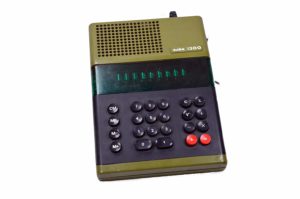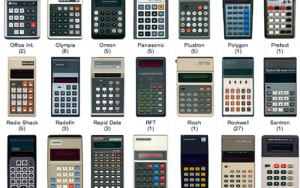
We have always needed help in adding up numbers. Even if a businessman was a mathematical savant, his customers would still want to see proof that the prices they were being charged were absolutely correct. Thus, businesses like my father’s truck garage had an adding machine that would print up a paper record of calculated figures.
But as electronics got more sophisticated and less bulky, pulling a handle on a noisy machine to calculate a value gave way to simply punching buttons on a wonderful new device known as a calculator. And if you remember JFK, you likely also have vivid memories of seeing one of them for the first time.
I had hours of fun playing with that adding machine that used to sit on dad’s office desk in that truck garage. you punched in the numeric keys, selected an add or subtract function, pulled the handle, and the sum would magically be printed out on a paper roll.
I also remember electric adding machines that would handle more complex operations like multiplication and division. You punched in the numbers and function the same way, then pushed a total key that might make the machine churn for as long as a half a minute before spitting out your answer.
But in 1971, I walked into the office of Fitz Freight in Miami, Oklahoma, and caught my first glimpse of a truly revolutionary device that could add, subtract, multiply, and divide. The most amazing thing about was the fact that it produced your total instantly. The second most amazing thing about it was the fact that the total was displayed in the form of blue illuminated numerals.

Joe Fitzgibbon was an old friend of my father’s. We had moved out of Miami three years earlier, but dad liked to revisit the town once every few months and keep in touch with his cronies. It was on one of these periodic visits that my eleven-year-old eyes first saw an electronic calculator.
I spent hours punching in long strings of numbers and being amazed that their impossibly complex values were instantly and silently calculated. And those blue LED’s were so space age to look at. It was easy to transform myself into Captain Kirk at the helm of the Enterprise, punching commands into the ship’s computer.
That calculator probably cost Fitz Freight at least $400. But as their components became more readily available, their price began dropping.
My oldest brother obtained one two or three years later for around a hundred bucks. In 1978, I finally sprang for one of my own from Sears that was loaded with functions and cost around fifty dollars.
Eventually, LCD’s replaced the power-hungry (but beautiful) LED’s. And as electronics got tinier and cheaper, calculators became business giveaways.
Nowadays, calculators are included as throw-ins on cell phones, watches, and even Google. But once upon a time, they were futuristic, pricey, amazing wonders that thoroughly entranced eleven-year-olds.
I still have a vivid memory of my father buying an LED watch in the 70’s at Towne East Mall in Wichita. I think it cost 150 back then.